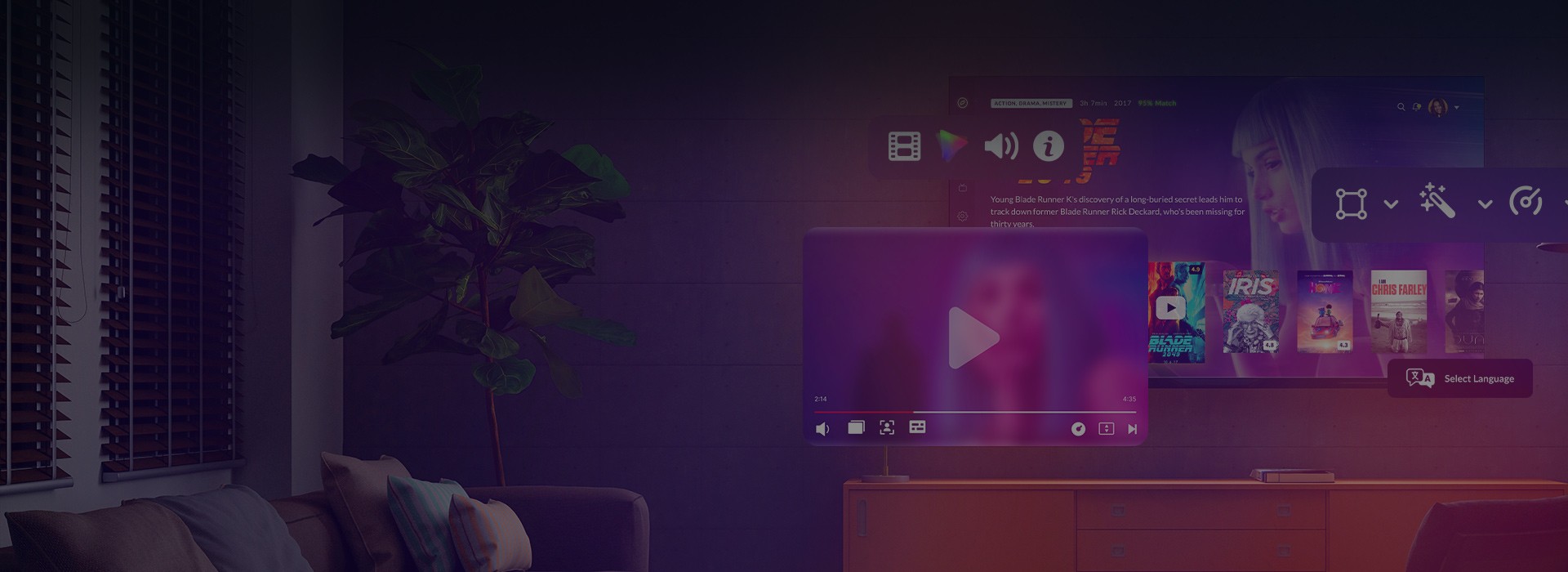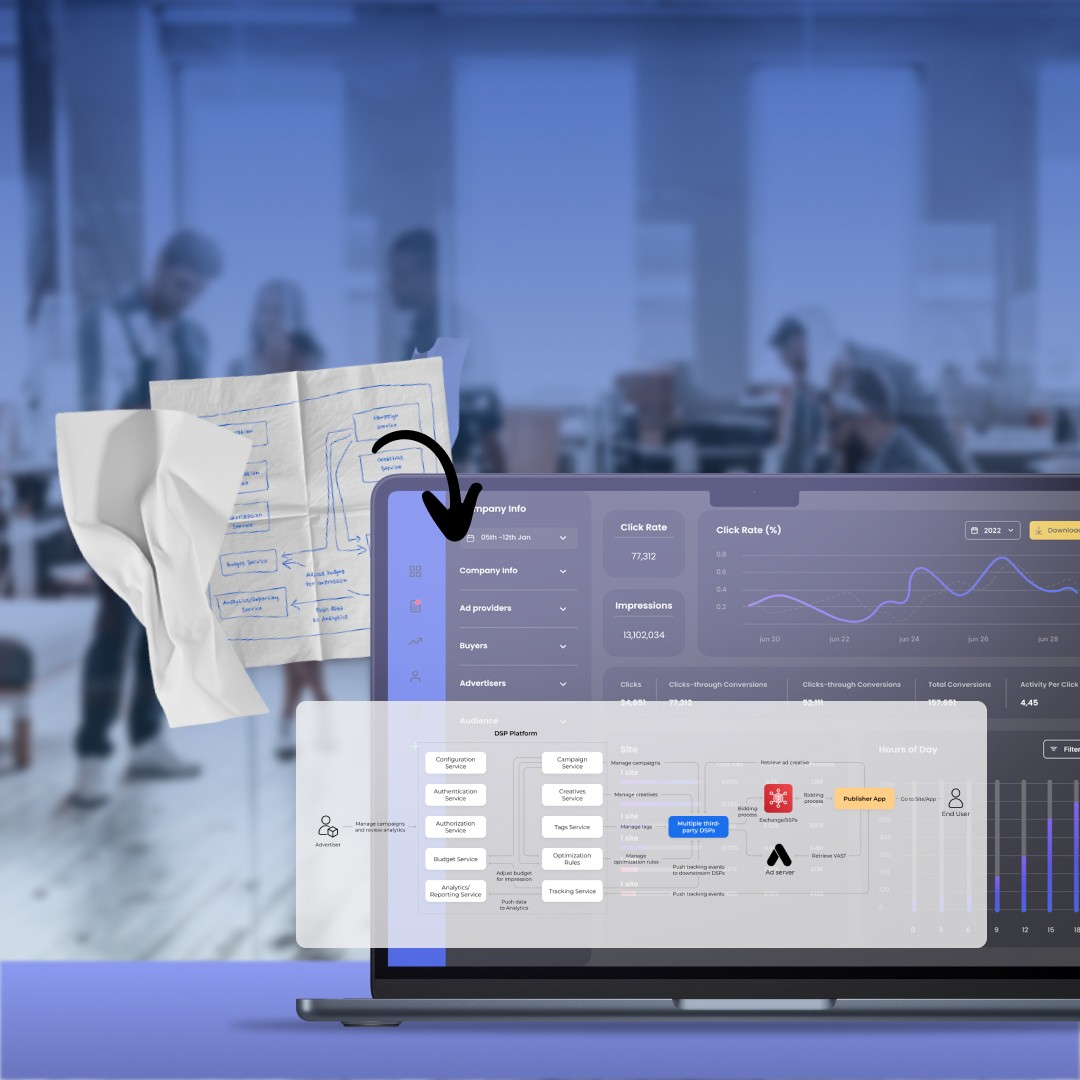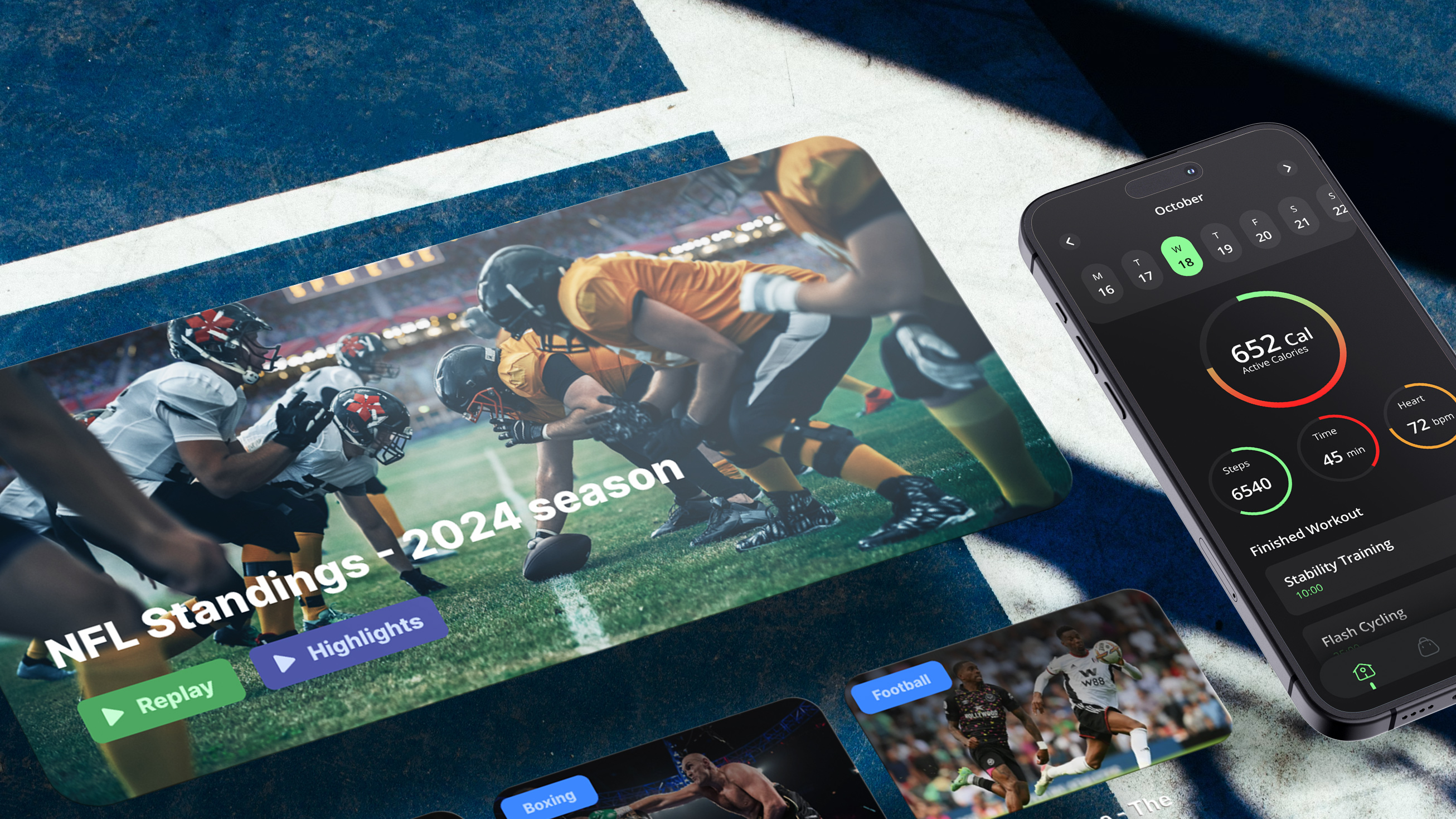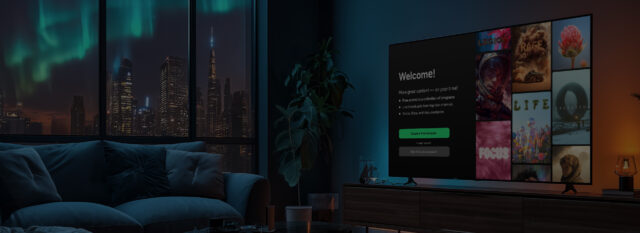The global OTT market continues its meteoric rise, drawing players from every corner of the digital economy. From media giants and sports broadcasters to eLearning providers and niche content creators, organizations are building direct-to-consumer platforms that sidestep traditional distribution channels. In fact, global revenue in the OTT video market is projected to reach $343.82 billion in 2025, with annual growth expected to continue at a CAGR of 6.56% through 20291. But with the explosion of OTT development services comes an equally urgent question: what makes an OTT platform not just functional, but truly successful?
This is the question Oxagile has been answering for over a decade. Through hands-on experience in delivering high-performing, custom OTT solutions across industries, we have developed a sharp eye for what separates a thriving platform from a forgettable one. In this article, we explore that difference in detail: through features, technology, and thoughtful design.
Who really needs an OTT platform?
OTT platforms are no longer the domain of a select few entertainment giants. While names like Netflix, Amazon, and Disney continue to dominate the spotlight, a quieter, more transformative movement is underway across industries. Educational institutions now stream immersive, real-time classes to remote learners. Fitness brands are reimagining engagement through interactive, on-demand workouts. Religious and cultural organizations foster global connections far beyond physical boundaries. Even individual creators armed with the right tools are launching tailored, branded platforms that reflect their unique voice and community needs. This democratization of OTT technology signals more than just access: it marks a shift in how audiences are reached, experiences are shaped, and value is delivered in a digital-first world.
Our portfolio reflects this diversity. As detailed in our guide to OTT platform development, businesses increasingly turn to custom solutions when off-the-shelf platforms fall short, whether due to performance limitations, lack of flexibility, or the inability to support specific monetization models. For many, success hinges not just on getting content online but on delivering a seamless, branded experience that adapts to evolving user expectations and stands out in a saturated market. And more often than not, that’s exactly what it takes to stay competitive.
Why a custom platform but not a compromise
One of the first things Oxagile’s experts often hear from clients is that their existing solution “almost” works. That qualifier — “almost” — is what turns many organizations toward custom video solution development. It’s the realization that platforms are not just delivery tools; they’re brand environments, business models, and user experiences rolled into one.
Looking to build an OTT platform tailored to your audience and business goals?
Discover more about our OTT app development services and how we help companies turn content delivery into a strategic advantage.
Prebuilt platforms tend to force businesses into molds, but no two use cases are alike. Some clients need tight parental control features. Others prioritize multilingual content and multi-device consistency. For many, personalization and monetization capabilities are mission-critical. The cost of retrofitting such functionality into an off-the-shelf solution can quickly rival the cost of building one from scratch.
At Oxagile, we begin with the business case, not a platform template. Every client comes with distinct goals, audiences, and market realities, making a one-size-fits-all approach ineffective. There’s no such thing as a universally “perfect” OTT platform, but if there were, we believe it would be built on four foundational pillars: seamless user experience, meaningful interactivity, intelligent personalization through AI, and flexible monetization. While there is probably no single solution that would combine all of these out of the box, understanding and optimizing each of these pillars individually is key to building a platform that not only performs but thrives in today’s competitive landscape.
OTT features for user experience: the foundation of viewer loyalty
Today’s users expect more than seamless streaming. They expect platforms to know them, adapt to their behaviors, and never interrupt their experience. That’s why, at Oxagile, we don’t treat convenience as a checklist — it’s a connected ecosystem that shapes every user interaction. True user-centricity isn’t about ticking boxes, but about anticipating needs, reducing friction, and creating moments that feel natural, personal, and seamless.
Today’s most impactful platforms go beyond functionality. They enable:
- Multi-profile and household-level customization that reflects real-life usage patterns
- Smart bookmarking and resume-watching, turning fragmented viewing into continuity
- Adaptive parental controls, empowering families to define safety on their own terms
- Advanced metadata filters that make discovery intuitive, not overwhelming
- Native support for multiple languages, captions, and accessibility to serve global, inclusive audiences
- A consistent, responsive experience across mobile, desktop, smart TVs, and consoles
What today’s viewers expect

- Multi-profile setup
- Resume watching
- Adaptive parental controls
- Advanced content filtering
- Multilingual & accessibility support
- Cross-device consistency

When these features work in harmony, they form the backbone of user loyalty and set the stage for long-term platform engagement. They are also the building blocks of user trust. They shape platforms that feel personalized before a single algorithm kicks in. Oxagile has brought them to life at scale, such as in this enterprise-grade OTT platform deployed across four device ecosystems.
OTT platform features for interactivity and personalization: engagement on the user’s terms
Interactivity and personalization have become more than just features — they’re strategic levers that shape how users experience and connect with content. Today’s viewers expect platforms to respond to their preferences in real time, offer moments of participation, and reflect their individual tastes and habits.
At Oxagile, we bring these expectations to life through interactivity and personalization solutions such as:
- Delivering tailored content through real-time audience segmentation
- Enabling live participation with integrated chat, polls, reactions, and voting
- Encouraging engagement through user-generated content and shareable highlights
- Adapting interface layouts with behavior-driven UI reshaping and dynamic carousels
- Supporting second-screen interactions to extend the experience beyond the primary device
- Simplifying control with smart navigation via mobile companions
- Personalizing the journey with curated content collections and topic-based TV packages
- Enhancing exploration through interactive EPGs and mosaic-style viewing options
- Adapting to user needs with feedback-driven updates that evolve the platform over time
OTT apps personalized & participatory by design

- Real-time content adaptation
- Live polls, chat, reactions
- Shareable user moments
- Dynamic, behavior-based UI
- Second-screen support
- Smart mobile navigation
- Curated content packages
- Interactive EPGs & mosaic view
- Continuous UX improvement

A good example of our approach is the OTT solution we built for a major European telecom provider. The goal was to offer more than just access to content — it was to create a viewing experience that felt relevant and personal from the first interaction.
We designed the platform to adapt to each user, with tailored profiles, smart recommendations, and curated content collections. Whether switching between devices or exploring new shows, viewers experienced a smooth, consistent journey shaped by their own habits. Features like interactive guides, multi-screen support, and flexible monetization made it easy for the platform to meet diverse needs.
The result was a dynamic, user-centered service used by over 80 million subscribers — one that felt intuitive, responsive, and built around the way people actually watch.
Smart OTT app features: AI as the invisible architect
Artificial intelligence shapes many of the most fluid and intuitive moments in digital products, but its presence is often invisible by design in OTT platforms. At Oxagile, we don’t treat AI as a feature to showcase, but as underlying intelligence that quietly improves everything it touches.
- It detects and resolves quality issues in real time, like audio drops or video freezing, without the need to decode the stream.
- It analyzes viewing patterns to predict content success and inform programming strategies.
- It refines user segmentation by identifying subtle behavioral patterns and building predictive profiles.
- It enables contextual, moment-aware ad placements by recognizing scenes, emotions, and pacing within the video.
- It automates content packaging, creating summaries, tags, and descriptions for faster distribution across platforms.
- It helps adapt UI layouts on the fly, responding to engagement signals and screen-specific usage behavior.
- It ensures global accessibility by generating high-quality, low-latency multilingual subtitles and voiceovers.
How AI quietly powers an OTT app’s experience

- Real-time stream issue detection
- Predictive content planning
- Deep audience segmentation
- Context-aware ad placement
- Automated metadata & tagging
- UI adaptation by behavior
- Multilingual subtitles & voiceovers

Informed by our deep expertise in AI in video, these capabilities are woven into the architecture of the solutions we deliver, creating invisible efficiencies and highly visible value. These capabilities are also not coming isolated. They’re part of a larger system where AI works in the background, streamlining complexity, personalizing experience, and driving outcomes without drawing attention to itself.
OTT monetization: revenue models that fit real needs
Monetization strategies are as varied as the platforms themselves. Some businesses rely on ads, others opt for subscriptions or pay-per-view, and a few explore hybrid approaches. Choosing the right model and supporting it with flexible technology is essential.
Oxagile supports this process through both consultation and implementation. Our expertise in CTV and addressable TV informs robust adtech integrations, while monetization modules enable:
- SSAI for smooth, unskippable ad delivery
- User segmentation and geo-targeting
- Flexible subscription tiers with trials and bundles
- In-app purchases, donations, and pay-per-stream options
Ways to win more viewers with ads

- Personalized ad experiences with SSAI
- Audience microsegmentation for high-relevance targeting
- Support for diverse monetization models (FAST, AVOD, SVOD, and Hybrid)

Our teams provide strategic guidance for clients unsure which model best fits their needs. You can also look through our review of four core monetization models to explore revenue strategies tailored to real-world content distribution needs, not just theoretical outcomes.
There’s no one-size-fits-all, but some principles always apply
A winning OTT platform isn’t built from a checklist of features. It’s built from a clear understanding of the audience, the content, and the value exchange between them. Some users want interactivity, while others crave simplicity. Some organizations are scaling revenue, while others are scaling access. But in every case, thoughtful design and strategic customization make the difference.
At Oxagile, the team believes that every platform should be as unique as the business behind it. That’s why we’ve spent years refining our approach to OTT app development, treating every new project not as a repeat of the last but as an opportunity to ask, once again, what success looks like.
And then, to build it.
Sources:
1. Statista, OTT Video — Worldwide



























